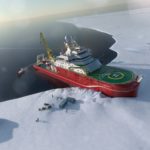Midlatitude ionospheric D region: height, sharpness and solar zenith angle
1 August, 2017 by Mark Clilverd
VLF radio amplitude and phase measurements are used to find the height and sharpness of the D region of the ionosphere at a mid- to high geomagnetic dip latitude of…Read more on Midlatitude ionospheric D region: height, sharpness and solar zenith angle
